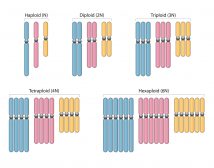Definition
noun
An aldohexose monosaccharide that is a stereoisomer of glucose and found in the leaves of the African shrub Protea rubropilosa
Supplement
Monosaccharides are the simplest form of carbohydrates. They may be classified based on the number of constituent carbon atoms. For instance, hexose is a monosaccharide with six carbon atoms. They may also be classified based on the functional group present: aldose and ketose. Allose is one of the hexose monosaccharides and classified as an aldose.
Allose is a stereoisomer of glucose. It is an epimer of altrose1 as well as of glucose (at C3). Allose and glucose have a chemical formula of C6H12O6. Allose, though, is a rare monosaccharide. It occurs in the leaves of the African shrub Protea rubropilosa as a 6-O-cinnamyl glycoside.
D-allose is a form of allose that, based on Fischer projection, is capable of rotating the plane polarized light in the clockwise direction. Because of the rarity of this sugar, it is being produced synthetically as it has been found to have medical benefits. D-allose has about 80% sweetness of sucrose (common table sugar). As an energy source, its energy value is almost close to zero. It has been demonstrated to provide immunosuppressive effect, suppress the amount of reactive oxygen species, and inhibit the proliferation of cancer cells.2
IUPAC name:
- (2R,3R,4R,5R)-2,3,4,5,6-Pentahydroxyhexanal
Chemical formula:
See also:
- monosaccharide
- glucose
- stereoisomer
Reference(s):
1 Allose. (n.d.). Retrieved from https://www.merriam-webster.com/medical/allose
2 Iida, T. & Okuma, K. (2013). Properties of Three rare Sugars D-psicose, D-allose, D-tagatose and Their Applications. J-STAGE, 13(9): 435-440. https://doi.org/10.5650/oleoscience.13.435







